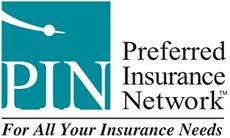As you assess your monthly expenses, have you noticed a gradual increase in your home and auto insurance rates? Climate change plays a pivotal role in these escalating costs, but the full extent of its impact might surprise you. From the heightened risks of natural disasters to the evolving pricing strategies of insurance companies, the implications are far-reaching. Understanding these shifts in the insurance landscape is crucial for making informed decisions about your coverage and financial security.
Key Takeaways
- Increased natural disasters lead to higher home and auto insurance rates.
- Rising rebuilding costs impact premiums due to climate-related damages.
- Regional variations affect rates based on local climate risks.
- Insurers adjust pricing models to reflect elevated climate change risks.
- Extreme weather events influence auto insurance premiums.
Increased Frequency of Natural Disasters
With climate change leading to more frequent natural disasters, insurance rates have been on the rise. You may have noticed an increase in premiums for your home and auto insurance policies. Hurricanes, wildfires, floods, and other catastrophic events are becoming more common, causing insurers to pay out larger claims and resulting in higher costs for policyholders like you.
As extreme weather events continue to impact communities across the globe, insurance companies are adjusting their pricing models to account for the elevated risk. This means that you may be facing higher premiums or deductibles to ensure that you’re adequately covered in case of a disaster.
It is essential to review your insurance policies regularly and consider any additional coverage options that may be available to protect your property and assets.
Elevated Risk Assessment by Insurers
Insurers are now conducting elevated risk assessments in response to the increased frequency of natural disasters caused by climate change. This heightened scrutiny allows insurance companies to accurately evaluate the risks associated with providing coverage in areas prone to extreme weather events.
Here’s why this trend is significant:
- Improved Risk Prediction: By analyzing historical data and climate projections, insurers can better predict the likelihood of natural disasters occurring in specific regions.
- Customized Coverage: Elevated risk assessments enable insurers to tailor insurance policies to individual customers based on their unique risk profiles, potentially offering more personalized coverage options.
- Enhanced Preparedness: Insurers can collaborate with policyholders to implement preventive measures and risk mitigation strategies, reducing the impact of potential future disasters.
- Competitive Advantage: Companies that conduct thorough risk assessments can differentiate themselves by offering more accurate pricing and coverage options, attracting customers looking for reliable protection against climate-related risks.
Changes in Insurance Pricing Models
Amid the increasing scrutiny of elevated risk assessments due to climate change impacts, the insurance industry is experiencing a shift towards alternative pricing models. Insurers are adapting to the changing risk landscape by reevaluating their traditional pricing strategies to better account for the heightened frequency and severity of climate-related events. One of the key changes in insurance pricing models involves the integration of advanced predictive analytics and machine learning algorithms to assess risks more accurately and set premiums accordingly.
| Pricing Model Changes | Description | Benefits |
|---|---|---|
| Predictive Analytics | Utilizing data analysis to forecast risks | Improved risk assessment and pricing accuracy |
| Usage-Based Insurance | Setting premiums based on actual usage | Fairer pricing and incentives for safe behavior |
| Parametric Insurance | Paying out based on predefined triggers | Faster claim settlements and reduced costs |
These innovative pricing models not only help insurers stay financially resilient in the face of climate change but also offer policyholders more tailored and equitable insurance options.
Impact on Home Insurance Premiums
In the realm of home insurance, climate change is exerting a tangible impact on premium rates. As extreme weather events become more frequent and severe, insurance companies are adjusting their pricing models to reflect the increased risks associated with climate change.
Four key impacts on home insurance premiums are:
- Increased Frequency of Natural Disasters: With rising temperatures, the frequency of events like wildfires, hurricanes, and flooding is on the rise. Insurers are factoring in these higher risks when determining premiums.
- Rising Costs of Rebuilding: As severe weather events cause more damage to homes, the costs of rebuilding or repairing them are also increasing. This leads to higher insurance payouts and, consequently, higher premiums for homeowners.
- Changes in Coverage Options: Insurers may limit coverage for certain climate-related risks or introduce new policy options to address emerging threats, impacting premium rates accordingly.
- Regional Variations: Different regions are experiencing climate change impacts uniquely, leading to varying insurance premium adjustments based on local risks and vulnerabilities.
Impact on Auto Insurance Premiums
As extreme weather events continue to impact home insurance premiums, it’s crucial to recognize their ripple effects on auto insurance rates. Climate change is leading to more frequent and severe weather phenomena like hurricanes, floods, and wildfires, which in turn are affecting auto insurance premiums. The increase in extreme weather events can result in more frequent auto accidents and higher claims for insurers, leading to elevated premiums for drivers.
Additionally, rising temperatures can impact road conditions, causing more wear and tear on vehicles and potentially increasing the likelihood of accidents. For instance, heat waves can lead to road buckling or pavement softening, creating hazardous driving conditions.
Moreover, extreme weather events may also contribute to an increase in auto thefts or vandalism in certain areas, prompting insurers to adjust their rates accordingly.
In response to the changing climate patterns, insurance companies are reassessing their risk models and adjusting premiums to reflect the higher likelihood of weather-related incidents. As a result, drivers may experience an uptick in their auto insurance costs as insurers strive to mitigate the impacts of climate change on their business.
Strategies for Managing Insurance Costs
To effectively manage your insurance costs amidst the changing landscape influenced by climate change, it’s essential to explore proactive strategies that can help you navigate potential premium increases.
Here are four key strategies to consider:
- Review and Update Coverage: Regularly review your insurance policies to ensure they align with your current needs. Adjust coverage levels and deductibles as necessary to optimize protection while keeping costs in check.
- Bundle Policies: Consider consolidating your home and auto insurance policies with one provider to qualify for multi-policy discounts. Bundling can lead to significant savings on premiums.
- Improve Home Safety Measures: Enhance the safety features of your home, such as installing security systems or storm shutters. By reducing the risk of damage or theft, you may be eligible for lower insurance rates.
- Maintain a Good Credit Score: A strong credit score can positively impact your insurance premiums. Pay bills on time, keep credit card balances low, and monitor your credit report regularly to ensure accuracy and favorable rates.
Frequently Asked Questions
How Can Homeowners Reduce Insurance Costs Post Natural Disasters?
To reduce insurance costs post natural disasters, consider increasing your deductible, improving home safety features, maintaining a good credit score, bundling policies, and regularly reviewing your coverage with your insurer to ensure you have adequate protection.
Are There Discounts Available for Climate-Resistant Home Improvements?
You can get discounts for climate-resistant home improvements. Check with your insurance provider for specific options. Upgrading roofs, windows, and reinforcing structures can help lower premiums while better protecting your home from weather-related damage.
Will Insurance Cover Damage From Climate Change-Related Events?
Yes, insurance typically covers damage from climate change-related events. It’s crucial to review your policy for specific coverage details. Consider updating your insurance to ensure adequate protection against the increasing risks associated with climate change impacts on your property.
Can Driving Less Help Lower Auto Insurance Premiums?
Driving less can lower auto insurance premiums. Insurers often offer discounts for low mileage. By reducing your time on the road, you decrease the likelihood of accidents. Contact your provider to explore potential savings.
What Factors Contribute to Increased Risk for Insurers in Climate Change?
Factors contributing to increased risk for insurers in climate change include extreme weather events, rising sea levels, and frequency of natural disasters. Insurers are adapting by adjusting premiums, coverage, and risk assessment models.
Conclusion
As climate change continues to affect the frequency and severity of natural disasters, home and auto insurance rates are on the rise. Insurers are adjusting their pricing models to reflect the increased risks, leading to higher premiums for policyholders. It is essential for individuals to stay informed about these changes, reassess their coverage regularly, and explore strategies to manage their insurance costs effectively in the face of evolving climate challenges.

